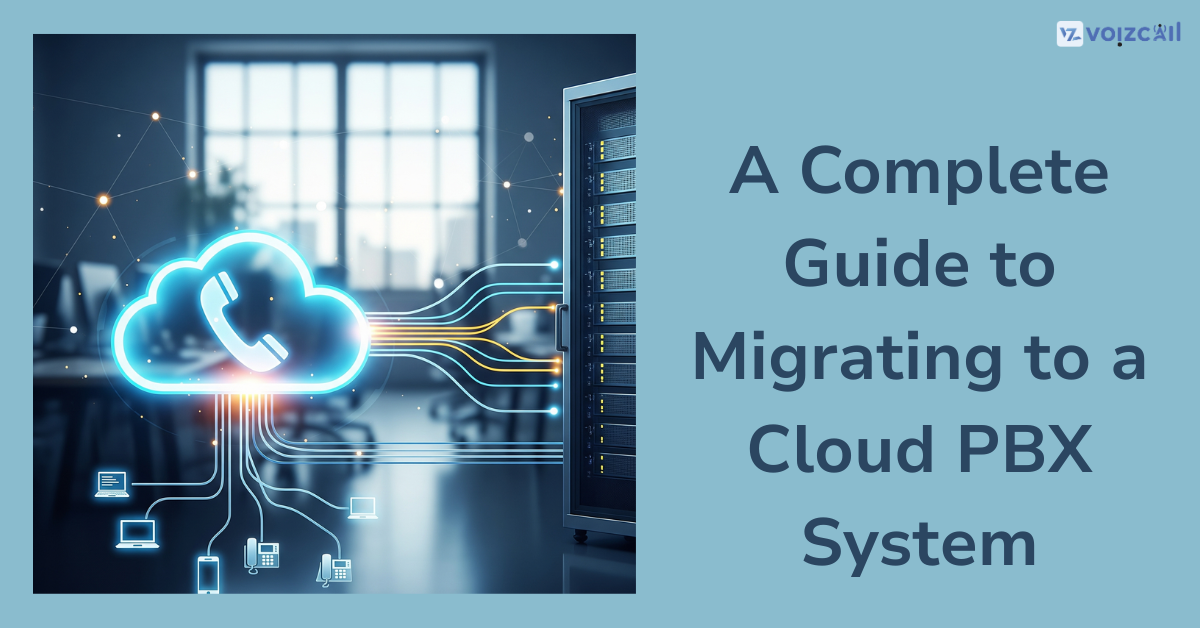


06/Aug/2025
Introduction: The Rationale of Businesses Going to the Cloud
The world today is one where everything is geared towards digital communications and making them fast, versatile, and manageable. That is why old-school phone system and related services are being abandoned in favor of Cloud PBX. Still burdened with outdated on-premise hardware or high cost phone lines, it may be the sharpest decision your company makes in 2020 to migrate your current phone system to a cloud-based PBX -like system.
So what is this Cloud PBX and how can you effectively migrate to Cloud PBX without breaking any workflow? This guide takes you through step by step everything you need to know in simple terms so that you can make the switch easily and with confidence.
A cloud PBX ( Private Branch exchange ) is a phone system located on the internet rather than a pedestrian telephone network. It connects through the internet by way of VOIP (Voice over internet protocol) and this eliminates the need to have large bulky hardware and complex wiring with it.
It is particularly awesome with remote teams and expanding corporations that must be flexible, expandable, and cost-efficient.
These are some good reasons:
Cheaper (no costly infrastructure and major maintenance)
Teleworking (call management anywhere)
Scalability (add/ delete users as size of business increases)
High tech features such as call forwarding, auto-attendants and voicemail to email
Stable availability and protection
Call / Email for Sales Inquiry Today
Moving to a Cloud PBX System- The Step-by-Step Guide
1. Review On Your Existing Phone System
The first step is to draw up a comprehensive list of functions of your existing setup as well as niggles. Get to know what works and what does not work. This will assist you to select the appropriate cloud PBX provider.
2. Select a Reliable Cloud PBX vendor
Seek a provider with high uptimes, good customer service and enterprise-level services. A good solution to take into account is the Voizcall, which offers affordable plans, a high-quality voice-over-IP calling and remote staff support.
3. Test Your Internet Connection
Cloud PBX uses your internet. Ensure your business supplies stable and fast internet, so that people do not stay in middle of the call due to connecting or dropping calls or because of low sound quality.
4. Design Migration
Make arrangements with your provider so that you can switch smoothly. Agree on a time frame, communicate to your team and prepare a transition short period.
5. Train Your Staff
After making the system live, you should educate your personnel on how to use new functionalities, such as mobile applications, virtual voicemail and call routing dashboards. The majority of cloud PBX systems are also intuitively designed and do not presuppose technical knacks.
Some of the Main Advantages of Converting to Cloud PBX
Portability & Flexibility: This product could be brought to work, home or on the road and never lose that vital call.
Cost Efficiency: Reduce greatly both the hardware and maintenance costs.
Business Continuity: Your cloud PBX is able to route calls even when outage occurs.
Simple to integrate with: Compatible with CRM and email systems and more.
Security: The largest majority of the providers employ the use of encryption and secure servers to guard your calls and data.
Bonus Tip: Businesses Love Voizcall
Voizcall is a cloud based calling service provider that has small to medium solutions. It has features such as call analytics, softphone support, and international calling which makes it a clear choice among teams in search of an inexpensive, but a powerful cloud PBX system.
Conclusion: Is it Time to Move?
Sure, migrating to a Cloud PBX system may sound technical, but with the right planning, and the right provider it has become easier than ever. It is highly advantageous, including low prices and high flexibility, and mostly, a modern business should not overlook it.
Bring your conversations into the cloud, and have your team prosper regardless of where they happen to be.